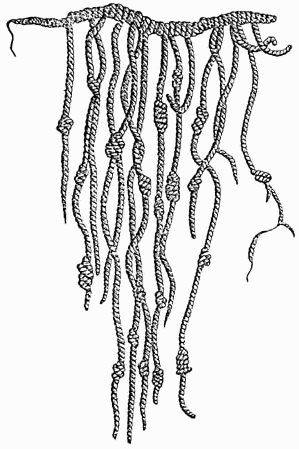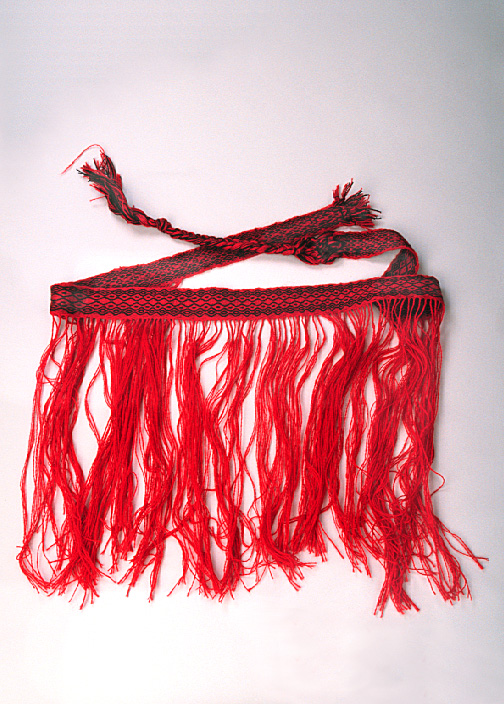An addition to this April Post on functions of belts & bands among early humans:
http://the-arc-ddeden.blogspot.com/2012/04/archaic-belts-functions.html
Belts & bands have played an enormous role in human technology prehistory.
Quipu of Incas of Peru were knotted strings hanging from a belt, for counting & codes, an alternative to written language. Quipu derived from female's 90 degree hanging string-fringe skirts, as seen on Denmark woman mummy (E. Barber) and here:
http://www.smith.edu/hsc/museum/ancient_inventions/stringskirt2.html
http://en.wikipedia.org/wiki/Quipu
 |
| Quipu |
 |
| string skirt |
Wampum were a form of message belt, corded warf threads with colored shells and weft. Wampum derived from 180 degree end-fringed male's loincloth, as seen in Urumchi mummies at Tarim Basin in China's west desert.
http://www.library.upenn.edu/exhibits/rbm/kislak/print/belt.html
 |
| wampum belt |
Tropical forest people usually used inner bark of tree, tapa cloth, pounded with a club or stone, wetted to lubricate.
Flax, linen, hemp etc. were first woven as grasses, later retted and splined/twined into threads and woven into cords/ropes/bands/etc.
Animal skins were pelted (pelleted/beaten) or chewed to soften to physically and chemically loosen the fibers.
Later, goat hair kemp & sheep wool were felted by wetting and pounding, the word 'walk' originated from foot-stamping felt.
Biblical Josephs' many colored coat was of bands of cloth (Afghan wool) woven by nomadic women who spun thread/yarn while walking with the flocks, then the bands were sewn together at camp into blankets, clothing etc. Persian banded shirts of silk were sewn the same way.
http://tletl.blogspot.com/2012/05/figmorarhoa.html
No comments:
Post a Comment